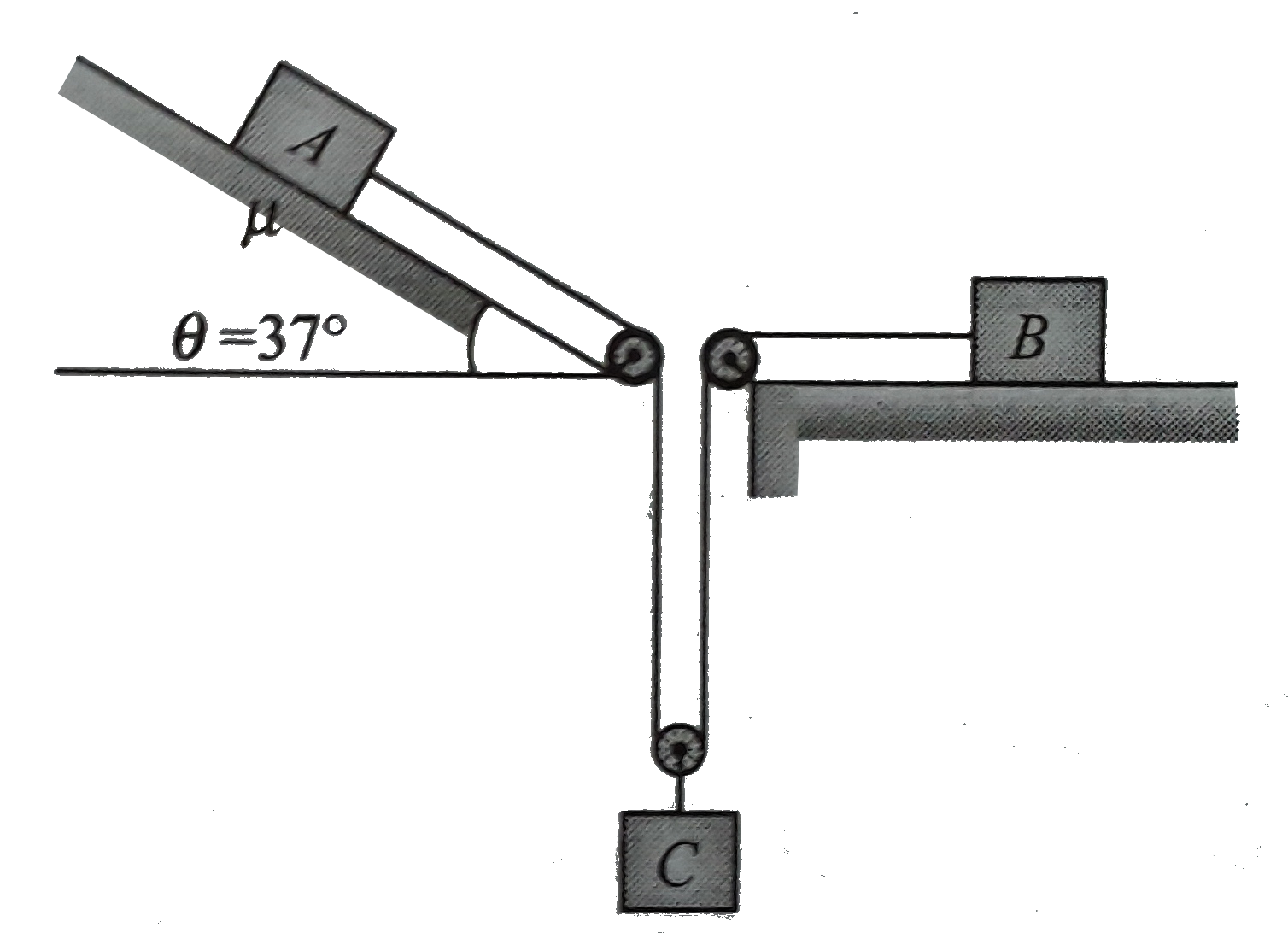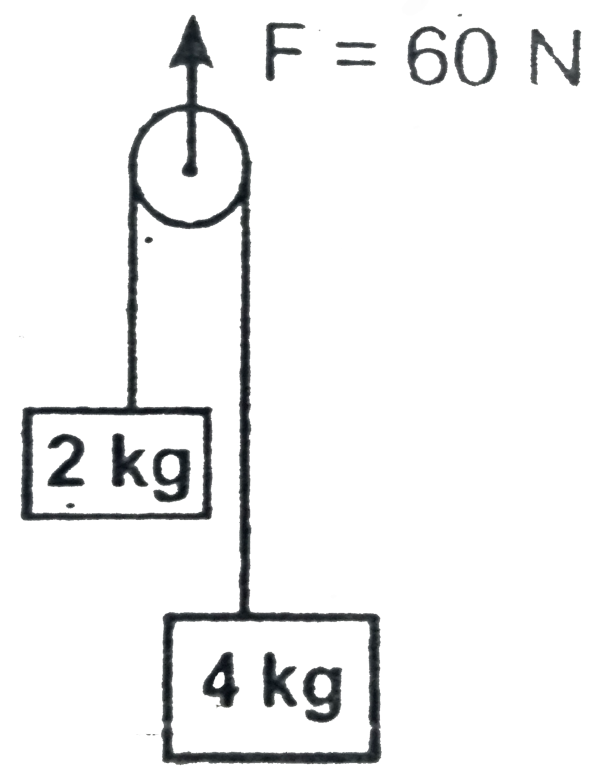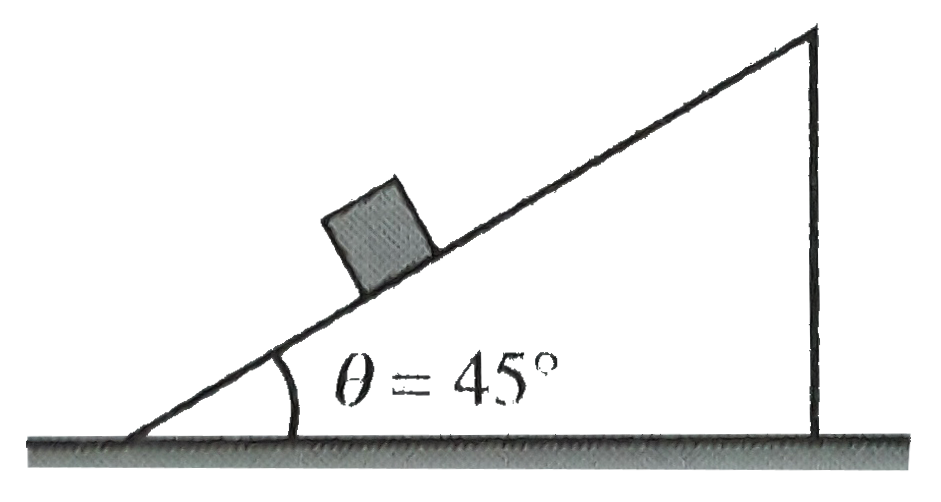In the system shown in the figure blocks A and B have mass m1=2kg and m2=26/7kg respectiely. Pulley having moment of inertia I=0.11kgm−2 can rotate without friction about a fixed axis. Inner and outer radii of pulley are a=10cm and b=15cm respectively. B is hanging with the thread wrapped around the pulley, while A lies on a rough inclined plane.
Coefficient of friction being μ=√3/10
Calculate
as. Tension in each thread, and
b. Acceleration of each block (g=10ms−2)

When the system is released, weight m2g tries to rotate the pulley in clockwise direction while down the plane component m1gsin30∘ of weight of block A tries to rotate it anticlockwise but moment produced by m2g is greater, therefore, the pulley has tendency to rotated clockwise. Let is angular acceleration be αr. The acceleration of blocks A and B will be equal to aα(up the plane) and bα (vertically downwards) respectively.
Let tension in threads connected with blocks A and B be T1 and T2, respectively.
Considering free body diagrams .

For forces on block A,N=m1gcos30∘ ...........i
T1−m1sin30i∘−μN=m1(aα).........ii
For forces on block B,m2g−T2=m2(bα)........iii
Taking moments of forces acting on pulley, about axis of rotation,
T1=17N,T2=26N and α−20rads−2
Acceleration of block A=aα=2ms−2 (up the plane)
Acceleration of block B=bα=3ms−2 (downward)
Topper's Solved these Questions
- RIGID BODY DYNAMICS 1BOOK - CENGAGE PHYSICS ENGLISHCHAPTER - RIGID BODY DYNAMICS 1EXERCISE - Exercise 2.1
6 Videos
- RIGID BODY DYNAMICS 1BOOK - CENGAGE PHYSICS ENGLISHCHAPTER - RIGID BODY DYNAMICS 1EXERCISE - Exercise 2.2
17 Videos
- RIGID BODY DYNAMICS 1BOOK - CENGAGE PHYSICS ENGLISHCHAPTER - RIGID BODY DYNAMICS 1EXERCISE - Integer
11 Videos
- PROPERTIES OF SOLIDS AND FLUIDSBOOK - CENGAGE PHYSICS ENGLISHCHAPTER - PROPERTIES OF SOLIDS AND FLUIDSEXERCISE - INTEGER_TYPE
2 Videos
- RIGID BODY DYNAMICS 2BOOK - CENGAGE PHYSICS ENGLISHCHAPTER - RIGID BODY DYNAMICS 2EXERCISE - Interger
2 Videos
Similar Questions
Knowledge Check
Two blocks A and B of masses 10 kg and 15 kg are placed in contact with each other rest on a rough horizontal surface as shown in the figure. The coefficient of friction between the blocks and surface is 0.2. A horizontal force of 200 N is applied to block A. The acceleration of the system is (Take g=10ms−2)
 A4ms−2B6ms−2C8ms−2D10ms−2
A4ms−2B6ms−2C8ms−2D10ms−2
In the arrangement shown in figure pulleys are mass of block A,b and C is m1=5kgm2=4kg and m3=2.5kg respectively .Co-efficient acceleration of friction for both the plane is μ=0.50 Calculate acceleration of which block when system is released from rest

View SolutionA block of mass 10 kg is released on rough incline plane. Block start descending with acceleration 2m/s2. Kinetic friction force acting on block is (take g=10m/s2)

View SolutionThe magnitudes of accelerations of blocks of mass 2 kg and 4 kg are respectively . ( Pulleys and threads are massless) ( g = 10 m/s2)

View SolutionTwo blocks of masses m1 and m2 are connected by a string of negligible mass which pass over a frictionless pulley fixed on the top of an inclined plane as shown in figure. The coefficient of friction between m1 and plane is μ.

View SolutionIn the pulley system shown in figure the movable pulleys A,B and C are of mass 1 kg each D and E are fixed pulleys are light and inexensible.

Choose the correct alternative (s).
View SolutionThe pulley shown in figure has a radius 10 cm and moment of inertia 0.5 kg-m^2 about its axis. Assuming the inclined planes to be frictionless, calculate the acceleration of the 4.0 kg block.

View SolutionA block B is pulled by a force of 18 N applied to a light pulley as shown in the figure. If the coefficient of friction is 0.4 and the acceleration of the block is 0.5 ms−2 , the mass of the block is (g=10m/s2)

View Solution



